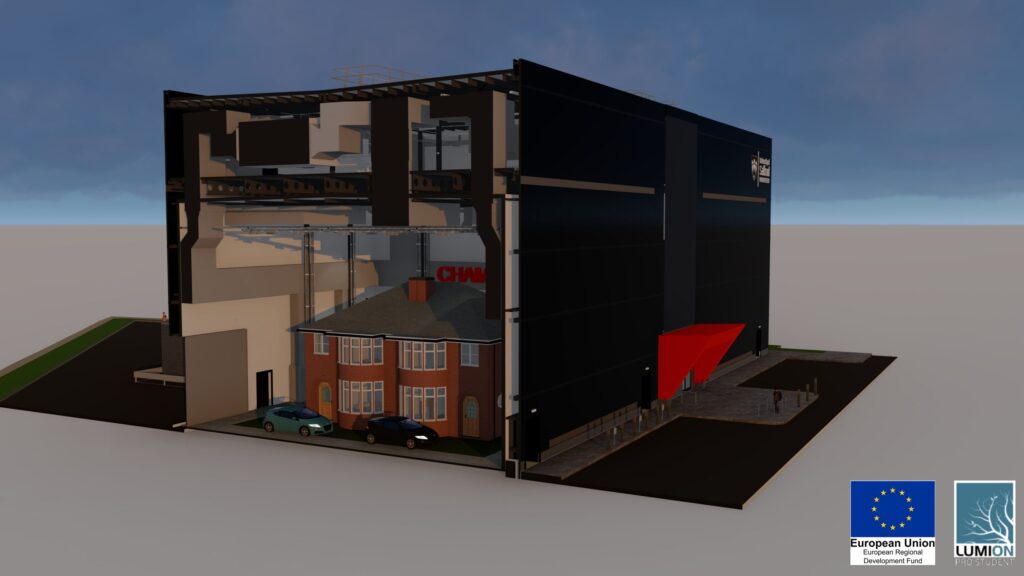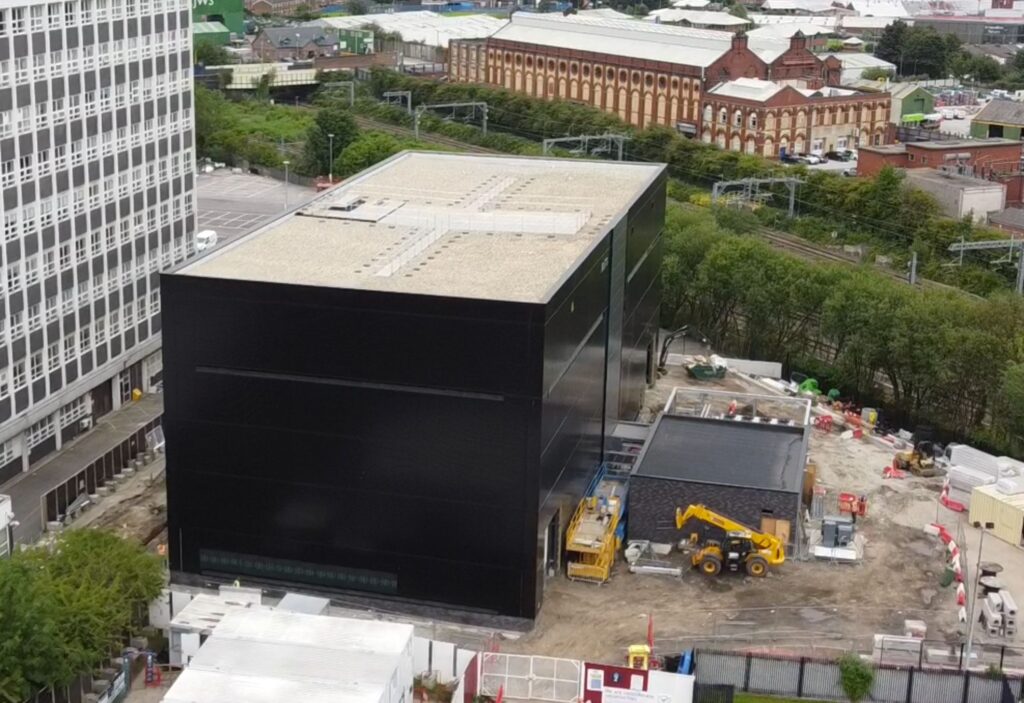
The current Salford Energy House
See inside the lab that can create rain, sun, and wind to test our homes for carbon efficiency
It might look like your typical Salford terrace home and could easily fool you into thinking it was built in 1919, but this house is different – it’s not lived in, but its fully functional – and it’s built inside a huge research chamber that can simulate all kinds of weather and temperature.
Representing 21% of the UK’s housing stock, and set inside a pioneering research facility at the University of Salford, Energy House has been in operation since 2010, providing researchers and businesses the opportunity to test products that offer solutions to reduce the amount of carbon leaking from our historic properties.
The UK has a large number of Victorian properties, which are structurally sound, but lack efficiencies when it comes to energy – and are a major contributor to the UK’s carbon emissions. The Salford Energy House provides a unique and essential testing and development facility where researchers can understand how to make our homes more energy efficient.
By conducting repeatable experiments in the chamber with variables, researchers are able to provide detailed data at the whole house level and gain a greater understanding that will help to address the UK and global retrofit challenge.
Now in a second stage of the Energy House project, a new £16m research facility is under construction, named Energy House 2.0, which is part funded by the European Regional Development Fund (ERDF). The facility will build on the current research at the University of Salford, with new opportunities to tackle the effects of global carbon emissions from homes and small commercial properties across the world.

How Energy House 2.0 will look when completed
The facility will allow researchers to measure the effects of extreme weathers not just in the UK but replicate 95% of the world’s climates across two environmental chambers that can achieve temperatures of between -20˚C and +40˚C, also simulating wind, rain, snow and solar light, allowing the facility to target a global market of businesses, researchers and expertise.
The Energy House 2.0 project is being constructed with partners Bowmer and Kirkland, AECOM and NG Bailey, and is due to be completed in early 2022. It will offer a focus on global issues such as off-site construction, smart homes, and energy use.

Energy House 2.0 under construction
Professor William Swan, Director of Energy House Laboratories at The University of Salford said: “We had an existing facility, the Salford Energy House, which was a high risk venture in 2010. However, we soon discovered it addressed a major gap in helping businesses and other stakeholders quickly understand how innovations could be applied by allowing us to conduct repeatable experiments.
“The Energy House 2.0 facility would go a step further than the original concept. It would allow for a much wider range of temperatures and conditions to be tested, covering 95% of the populated globe, as well as provide the ability to build any type of domestic or small commercial property within the chamber, rather than a single property typical of the UK.
“Energy House 2.0 will provide an international focus for improving the performance of domestic and small commercial buildings. It will show the UK taking leadership in not only driving down CO2 emissions, but also supporting rapid innovation in the sector.
“The project will explore new materials; new ways of building; new types of heating systems and controls; and the integration of smart technology, all within a controlled environment. This approach will allow the University of Salford and innovative businesses to understand how these products and systems come together to create our homes of the future and understand their real-world performance.”
Leaky homes – the problem with our properties
Across Europe, the built environment is responsible for 40% of energy consumption and creates 36% of greenhouse gas emissions.
Greater Manchester boomed thanks to the industrial revolution, but as a result the region has a large number of 19th and 20th century properties that have not benefited from modern construction techniques and are susceptible to poor energy efficiency, leaking carbon into the atmosphere through poor insulation, lack of draft proofing or double glazing.
The biggest challenge facing the region is in retrofitting these homes – of which some 60,000 will require improvement to bring them up to modern energy efficiency standards.
A solution to this challenge is being led by the Retrofit Task Force, made up of local representatives from local government, social landlords, energy suppliers, colleges, building authorities, experts and investors to agree actions and measures to support retrofitting in Greater Manchester.
The reason why the work at the Salford Energy House, and the Energy House 2.0 is so important, is that it seeks to address one of the key problems facing homes not just in the UK, but around the world.
What can Energy House 2.0 do?
The Energy House 2.0 facility will have two environmental chambers with the ability to regulate temperatures between -20˚C and 40˚C, whilst also simulating rain, wind, snow, and solar light.
The project is also the UK’s first smart meter research laboratory, looking at how smart meter technology can help meet carbon reduction targets and work alongside energy saving appliances in the home.
Energy House 2.0 can also test a range of insulations, including wall, floor, loft and roof insulation, allowing manufacturers to meet sustainable standards that allow their products to effectively insulate homes to reduce loss of heat – reducing bills and carbon footprint.
Overall, the project is expected to save the equivalent of 3,000 tones of Co2 per year, having a direct impact on around 20,000 people.
Find out more about the types of businesses and research benefiting from the Energy House projects, here.



